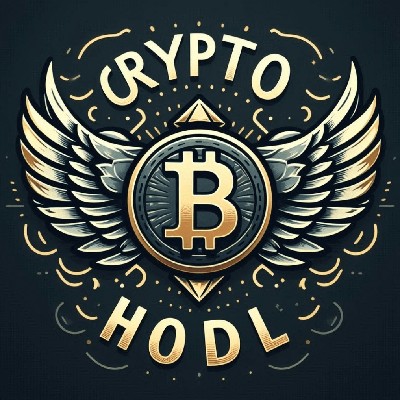


Uniswap PriceUNI
UNI to USD converter
Do you think the price of Uniswap will rise or fall today?
About Uniswap (UNI)
About Uniswap
Uniswap (UNI) is a leading decentralized exchange (DEX) that allows the trading of different digital assets on the Ethereum network. Established in 2018 by former Siemens mechanical engineer, Uniswap quickly became one of the most widely-used DEX in the crypto market and is now among the pioneers in decentralized finance (DeFi). Unlike traditional exchanges, which rely on order books to match buyers and sellers, Uniswap employs an automated market maker (AMM) protocol. This AMM model enables liquidity providers to pool their funds into smart contracts, which automatically execute trades based on predefined algorithms.
One of the standout features of Uniswap is its commitment to decentralization. Its smart contract-based infrastructure ensures that all transactions and liquidity provisions occur directly on the Ethereum blockchain, providing a transparent and censorship-resistant environment for users. Uniswap is governed by its community through its native utility token, UNI. UNI holders have voting rights, allowing them to propose and vote on various protocol upgrades, changes, and fee structures.
Resources
Whitepaper: https://uniswap.org/whitepaper-uniswapx.pdf
Official website: https://uniswap.org/
How Does Uniswap Work?
Uniswap's operation revolves around liquidity pools and automated liquidity provision, which eliminates the need for traditional order books. In a liquidity pool, users can contribute funds in two different tokens, effectively becoming liquidity providers. These pools create markets for various token pairs, enabling traders to easily swap between them.
The pricing mechanism on Uniswap is driven by a simple mathematical formula, known as the constant product formula. This formula ensures that the product of the number of tokens in each pool remains constant, even as trades are executed. As a result, the more a particular token is purchased, the higher its price becomes due to the reduced supply in the pool. Conversely, when selling a token, the price decreases as the pool's supply of that token increases.
For instance, if a user wishes to trade Token A for Token B, the Uniswap smart contract automatically calculates the number of tokens to be exchanged based on the current pool ratio. This process ensures that traders receive fair prices and liquidity providers earn fees for providing the trading pairs.
Liquidity providers are incentivized with trading fees to contribute to the pool, promoting a healthy ecosystem for Uniswap. These fees are distributed proportionally to liquidity providers based on their share in the pool. Moreover, liquidity providers receive UNI tokens as an additional reward, enhancing the attractiveness of participating in the Uniswap ecosystem.
Uniswap takes a small fee of 0.3% for every transaction made using readily available liquidity pools. Those who contribute liquidity to such pools receive a fraction of the fee as rewards.
Security and Challenges
Uniswap has not been without its challenges. The most significant concern is the risk of smart contract vulnerabilities. In fact, there have been instances of hacking incidents on DeFi platforms that have led to substantial losses. In this April 2023, hackers used the sandwich attack to successfully steal about US$25.2 million worth of crypto from Uniswap
Uniswap, like any other DeFi protocol, is susceptible to these risks. However, the community and the development team have consistently worked together to improve security measures and conduct regular audits to minimize these risks and strengthen the platform's overall resilience.
What Determines Uniswap's Price?
Determining the current price of Uniswap's native token, UNI, involves a multitude of factors deeply rooted in its decentralized financial (DeFi) architecture. As a dominant player operating on the Ethereum blockchain, Uniswap employs an Automated Market Maker (AMM) model, which replaces traditional order books with liquidity pools.
Uniswap Market Cap and Price Fluctuations
The overall Uniswap market cap plays a significant role in determining UNI token value. Arbitrage opportunities are crucial for balancing prices across platforms. When the UNI price on Uniswap diverges from that on other exchanges, arbitrageurs act swiftly to equalize the price, which in turn influences UNI price history.
How to Check Uniswap Price
For those seeking to understand how to check the current Uniswap price, various platforms offer real-time Uniswap price charts and live updates. Conducting technical analysis on these charts can provide valuable insights into the best time to buy UNI tokens.
Uniswap vs Competitors and Governance Updates
Uniswap's prominence in the DeFi space, especially when compared to competitors like PancakeSwap, often makes headlines in UNI crypto news. Updates on governance proposals and protocol upgrades can have immediate effects on UNI price predictions.
Therefore, keeping tabs on Uniswap token trading volume, market cap, and governance updates is crucial for anyone interested in understanding the Uniswap price today and making educated future investment decisions.
Conclusion
Uniswap has emerged as the leading decentralized exchanges, redefining how cryptocurrencies are traded and offering users a decentralized, efficient, and secure platform to exchange digital assets. Its automated market maker protocol, liquidity pools, and native governance token, UNI, have propelled Uniswap's growth and solidified its place as a pioneer in the decentralized finance (DeFi) sector.
It's important to note that like any other cryptocurrencies, Uniswap carries its own risks and it's always wise to do your own research and exercise caution while investing.
Related Articles about Uniswap
AI analysis report on Uniswap
Live Uniswap Price Today in USD
Uniswap Price History (USD)
 Lowest price
Lowest price Highest price
Highest price 
What is the highest price of Uniswap?
What is the lowest price of Uniswap?
Uniswap Price Prediction
When is a good time to buy UNI? Should I buy or sell UNI now?
What will the price of UNI be in 2026?
What will the price of UNI be in 2031?
Hot promotions
FAQ
What factors influence the price of Uniswap (UNI)?
How can I predict the future price of Uniswap (UNI)?
Is Uniswap (UNI) a good long-term investment?
What is the current price of Uniswap (UNI) and how can I track it?
How does Uniswap's liquidity and volume affect its price?
What risks should I consider before investing in Uniswap (UNI)?
How does the Ethereum network affect Uniswap (UNI)’s price?
Where can I buy Uniswap (UNI) safely?
What is the correlation between Uniswap (UNI) and Bitcoin or Ethereum prices?
How can I stay updated with Uniswap (UNI)’s price fluctuations and market news?
How do I use Uniswap?
What are the fees on Uniswap?
What are the risks of using Uniswap?
What determines the price of tokens on Uniswap?
What affects the value of UNI Token?
How accurate is the price on Uniswap compared to centralized exchanges?
What is the current price of Uniswap?
What is the 24 hour trading volume of Uniswap?
What is the all-time high of Uniswap?
Can I buy Uniswap on Bitget?
Can I get a steady income from investing in Uniswap?
Where can I buy Uniswap with the lowest fee?
Uniswap news
Uniswap updates
Crypto Cools Off Briefly, But the Uptrend Remains Intact
AERGO Price Prediction 2025, 2026–2030
Zora (ZORA): The Future of Onchain Creativity and Social Networks
Solana vs Ethereum in 2025: A Comprehensive Comparison
What Is WalletConnect? A Complete Beginner’s Guide (2025)
The Best Solana Decentralized Exchanges in 2025
The Full Stack of a Memecoin: Token Launch, Platform Selection, and Memecoin Pairing
Bubblemaps (BMT): Blockchain Transparency Visualized
241128: Bitcoin Pumps Above $97K, Then Dumps, as Ether, XRP Surge 7%
241118: XRP Sees Record Futures Bets Amid Price Surge Above $1.20
Uniswap Market
Uniswap Holdings
Uniswap holdings distribution matrix
Uniswap holdings by concentration
Uniswap addresses by time held

Global Uniswap Prices
- 1
- 2
- 3
- 4
- 5
Related cryptocurrency prices
Prices of newly listed coins on Bitget
How to buy Uniswap(UNI)

Create Your Free Bitget Account

Verify Your Account

Convert UNI to USD
Buy more
Where can I buy Uniswap (UNI)?
Video section — quick verification, quick trading

UNI to USD converter
Uniswap ratings
Bitget Insights




Trade
Earn
UNI/USDT
SpotUNI/USDT
MarginUNI/USDT
USDT-M Futures








Uniswap Social Data
In the last 24 hours, the social media sentiment score for Uniswap was 3.2, and the social media sentiment towards Uniswap price trend was Bullish. The overall Uniswap social media score was 112,745,938, which ranks 45 among all cryptocurrencies.
According to LunarCrush, in the last 24 hours, cryptocurrencies were mentioned on social media a total of 1,058,120 times, with Uniswap being mentioned with a frequency ratio of 11.05%, ranking 37 among all cryptocurrencies.
In the last 24 hours, there were a total of 380,139 unique users discussing Uniswap, with a total of Uniswap mentions of 116,911. However, compared to the previous 24-hour period, the number of unique users increase by 11%, and the total number of mentions has increase by 17%.
On Twitter, there were a total of 9706 tweets mentioning Uniswap in the last 24 hours. Among them, 21% are bullish on Uniswap, 4% are bearish on Uniswap, and 75% are neutral on Uniswap.
On Reddit, there were 172 posts mentioning Uniswap in the last 24 hours. Compared to the previous 24-hour period, the number of mentions decrease by 14% .
All social overview
3.2